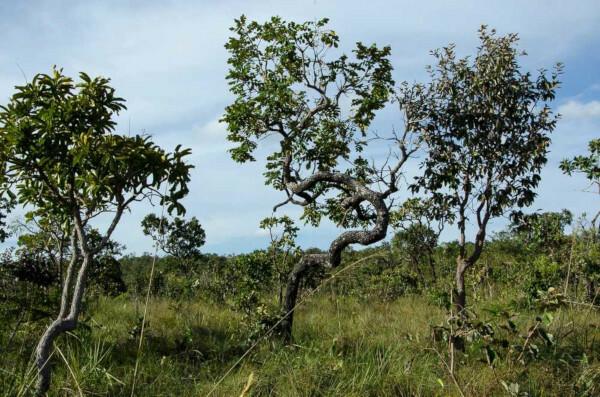O thick it is the second largest plant formation in Brazil and covered approximately 25% of the Brazilian territory. Currently, according to data from the Ministry of the Environment, it has less than 20% of the former area, and of this remaining only 2% are protected in parks or reserves.
Extensive cattle raising and mechanized soy, corn and cotton agriculture are the main causes of the destruction of a large part of this type of plant formation.
For the practice of agricultural activity, fires frequently occur, as this is an act that generates low costs for the initial preparation of the soil. Another form of burning in this biome is cigarette stubs thrown into the forest – high temperatures, dry weather and low relative humidity contribute to the spread of fire.
However, fire in the cerrado can be started by natural factors, this occurs through the accumulation of dry biomass, straw, low humidity and high temperature, which end up creating favorable conditions for such. Electrical discharges, spontaneous combustion and even friction between rocks and the friction of the fur of some animals with dry forest can end up triggering the fire.
Fire caused by natural factors can be beneficial to the biome, as it contributes to seed germination, which need a thermal shock to break their vegetative dormancy, especially those that are waterproof. The rapid rise in temperature causes cracks in the seed, favoring water penetration and initiating the germination process. Fires also contribute to soil nutrient cycling.
Do not stop now... There's more after the advertising ;)
Another factor resulting from this occurrence is the twisted shapes of the trees, causing their regrowth buds to occur laterally. The thick bark of the trunks act as a fire defense mechanism.
The cerrado has a quick recovery power, regrowth in a short period and attracts several herbivorous animals in search of new forage. Some species, such as anus, carcarás and seriemas, follow the fires and feed on insects and reptiles affected by fire.
However, the intensification of burning by man, without proper management, has caused the degradation of the environment, land depletion, erosion, loss of biodiversity in the cerrado, among other negative factors.
By Wagner de Cerqueira and Francisco
Graduated in Geography
Brazil School Team
Would you like to reference this text in a school or academic work? Look:
FRANCISCO, Wagner de Cerqueira e. "Action of fire in the savannah"; Brazil School. Available in: https://brasilescola.uol.com.br/brasil/a-acao-fogo-no-cerrado.htm. Accessed on June 28, 2021.
geography of Brazil

See here the most important characteristics of the Cerrado, such as location, fauna, flora, climate, vegetation, aquifer potential, soil characteristics and devastation.
